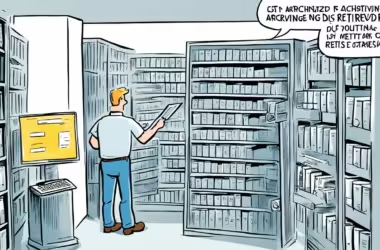Is your code’s reliability luck or careful checking? As software gets more complex, high-quality code from the start is crucial. Test Driven Development (TDD) emerges as a game-changing method. It started to stop fixing bugs after they happen. TDD is now key in modern software making.
If you’re experienced or new, knowing TDD’s essence, growth, and use is essential. We’ll look into TDD’s parts, tools, and how it helps business aims with examples. You’ll learn not just about making tests, but building a top-notch software culture.
Key Takeaways
- The principles and approach of Test Driven Development.
- Understanding the significant role of unit tests in TDD.
- Exploration of TDD tools and frameworks for efficient development.
- Real-world case studies demonstrating the effectiveness of TDD.
- Strategies for the successful implementation of TDD to achieve business goals.
The Essence and Evolution of Test Driven Development
Understanding the essence of TDD starts with its origins. It was first discussed by Kent Beck in his book “Test-Driven Development: By Example.” Beck introduced key principles that changed how coding was done. These principles encourage developers to write tests before writing any code.
The story of evolution of TDD is one of slow acceptance within software development. It’s not just about new ways to write code. It’s also about a big change in workflow and thinking. Developers are encouraged to write just enough code to pass failing tests at first. This leads to better code through constant improvement.
- Early Adoption: At first, TDD was seen as too slow and a block to quick progress.
- Shift in Perception: As tools and understanding grew, TDD became known for making software more reliable. It gained popularity.
- Integration in Modern Practices: Now, TDD is a key part of Agile and DevOps. It’s known for improving code quality and teamwork.
The story from the start to now shows TDD’s strength and ability to adapt. The essence of TDD, with its focus on detailed and forward-thinking coding, continues to shape new developers. It remains central to how software is made.
Understanding the TDD Approach
The Test Driven Development (TDD) approach changes coding in a big way. It promotes a step-by-step workflow that leads to better code quality with fewer bugs. This section explains the main ideas and steps of TDD. It helps developers use these strategies to create strong code environments.
Principles of TDD
The core of the TDD approach lies in its key principles. These guide developers from the start to the end. Starting with write tests first, this method prepares the ground for solid development. It’s about setting clear goals for what the code should do and tackling each feature one at a time.
Write Tests First: The Foundation of TDD
Write tests first is a philosophy where developers plan their functions with tests before typing any code. This step makes sure all new code lives up to set standards. It makes the code more reliable and cuts down debugging and code regression time.
The “Red-Green-Refactor” Cycle
The red-green-refactor cycle is key to TDD. This cycle has three main steps:
- Red: Create a test for a new function or improvement that fails.
- Green: Write just enough code so the test passes.
- Refactor: Improve this new code to meet standards and fit smoothly with the current code.
This process focuses on constant feedback and gradual improvement. It’s essential for making software systems that can grow and be easily maintained.
Sticking firmly to these methods is crucial for TDD success. It ensures code is technically sound and meets business goals. By really understanding TDD’s key points, the ‘write tests first’ idea, and the red-green-refactor rhythm, developers can greatly improve their coding work. They can achieve higher efficiency and make fewer mistakes.
Test Driven Development in Action
Exploring practical applications of TDD reveals how it improves the development process and the final software quality. TDD involves steps that make sure each phase follows specific tests. This leads to more dependable and stronger software.
In complex systems, like in large companies, TDD’s importance is clear. Tests are made for each function before writing code. This catches mistakes early and makes the code easier to understand.
- Reduction in bug rates
- Improved code quality
- Faster debugging and validation
TDD also helps continuous integration and development (CI/CD) practices to succeed. By testing early, teams prevent new changes from breaking the software. This makes releases smoother.
Moreover, TDD improves teamwork by making goals clear through test writing. This clear direction is crucial for working well together, especially in agile teams.
- Determine the test scope before starting code work.
- Write a failing test for a new feature outline.
- Add just enough code to make the test pass.
- Clean up the new code to fit well with the old.
- Do it again for the next part.
Through TDD, companies not just improve their product’s technical side. They also make their work methods better, leading to successful software releases.
Code Quality and the Developer’s Mindset
At the heart of Test Driven Development (TDD) is focusing on top-notch code quality. This means constantly refactoring and sticking to the DRY principle. These approaches help shape the developer mindset to aim for cleaner and more efficient code.
Refactoring: Clean Code Philosophy
Refactoring is key in coding, especially in TDD settings. It means changing the code’s internal setup without messing with its external actions. This step helps developers tidy up the code, making it not just functional but also simple to read and maintain.
Staying dedicated to regular refactoring promotes a culture of code quality. This culture is all about being proactive and stopping problems before they start.
DRY Principle: Reducing Code Duplication
The DRY (Don’t Repeat Yourself) principle is a smart way to make coding smoother by cutting out repeat code. Following this principle makes code more efficient and lowers the chance of mistakes. By living the DRY principle, developers focus on making code that is both modular and scalable. This aligns with top-notch software development practices.
- Foster Cleaner Codebases: Using refactoring and the DRY principle helps create cleaner, easier-to-understand code.
- Enhance Code Longevity and Scalability: These approaches keep code strong and flexible for future changes or expansions.
- Reduce Debugging and Testing Time: Starting with high-quality code quality reduces later bugs and issues, making testing and upkeep simpler.
By adopting these techniques, developers don’t just meet current project needs. They also build a strong base for future projects. Such habits highlight the proactive developer mindset needed to succeed in today’s rapid tech world.
Benefits and Challenges in the TDD Workflow
The Test Driven Development (TDD) workflow is crucial for modern software building. It provides structured ways of working and clear benefits. However, adding TDD to daily work increases quality but also introduces challenges to manage.
Predictability in Development Processes
Benefits of TDD start with development predictability. By writing tests before coding, it ensures each part works as expected early on. This method cuts down on surprises in project schedules and results. It makes for a dependable and streamlined work process.
- Enhanced accuracy in project estimations
- Better understanding of project scope and requirements
- Decreased likelihood of project overruns
Overcoming the Hurdles of TDD Implementation
The benefits of TDD are clear, but there are hurdles. Knowing and tackling these challenges is crucial for TDD to work well in teams.
- Initial Learning Curve: New TDD developers face a steep learning period, which may slow down work at first.
- Integration with Existing Projects: Adding TDD to projects without tests is tough and needs careful planning and action.
- Resistance to Change: Getting everyone on board with a TDD approach can be hard. This is especially true for those used to older methods.
Dealing with TDD challenges requires dedicated training, step-by-step adoption, and creating a culture that values TDD’s predictability in development.
Understanding TDD deeply and using it wisely can overcome adoption hurdles. Continuously improving and solving early problems lets teams get big, lasting benefits. This improves the quality and reliability of software.
The Significance of Unit Tests in TDD
Grasping the significance of unit tests in Test Driven Development (TDD) is key. Unit tests check the work of code pieces or “units.” By using TDD and these tests, developers build a strong code base. This improves code reliability and ease of changes.
With TDD, creating small, clear unit tests is step one. This makes sure each test matters. It also confirms features meet business needs. So, fewer surprises come up later in development. And, fixing bugs becomes easier.
- Early Bug Detection: Starting unit tests early in TDD finds and fixes bugs early. This saves time and effort.
- Documentation: Unit tests help explain the system to newcomers. They can learn how things work and are designed.
- Refactoring Confidence: Having many tests lets developers update code safely. They know changes won’t break the app mistakenly.
So, knowing the significance of unit tests isn’t just about following rules. It’s about choosing a method that lifts software quality. Through detailed checks at each phase, TDD and unit testing build software that works well. They also make it ready for future changes and challenges.
TDD Tools and Frameworks for Efficient Development
Using TDD tools and frameworks is key for efficient development in TDD. These tools are made to meet TDD’s specific needs. They help make tests easier to create, run, and manage.
- JUnit – Great for Java, JUnit makes it easier to write and test code quickly with its annotations and assertions.
- pytest – Popular among Python programmers, pytest lets you write and scale tests easily without extra code.
- Mocha – JavaScript developers like Mocha for its flexible testing and ability to work with different assertion libraries.
TDD tools and frameworks don’t just improve test coverage and precision. They also make development faster and more efficient. When these tools are part of the development process, software is more sturdy and dependable.
Picking the right tools changes how you do TDD. It makes writing, running, and updating tests simpler. This way, you deliver better software faster.
Implementing TDD Across the Organization
The journey of implementing TDD in an organization needs careful planning and strong execution. It’s about how companies can make sure everyone supports organizational adoption of TDD. Each person needs to fully grasp and support this innovative method.
Implementing TDD at an organizational level begins with valuing continuous learning and getting better. Gradually introducing TDD can ease doubts and increase acceptance across teams. Here are important steps to follow:
- Executive Buy-in: Get support from top management to back TDD adoption as a key initiative.
- Training and Mentorship: Invest in broad training programs to teach developers TDD principles and methods.
- Pilot Projects: Begin with small projects that can greatly benefit from TDD. This shows its clear advantages.
- Feedback Mechanism: Set up a system to monitor progress, fine-tune strategies, and solve teams’ issues.
- Recognition and Rewards: Celebrate teams and individuals who effectively use and support TDD methods.
To increase the success of organizational adoption of TDD, focus on these steps. The payoff from adopting TDD is big, affecting various parts of tech development:
- Increase in code quality and upkeep
- Growth in developer productivity
- Less bugs in QA or deployment phases
- Improved predictability in timelines and outputs
Adopting TDD in an organization isn’t just about following practices. It’s about creating a culture that values teamwork, accuracy, and new ideas. Fully understanding and applying these strategies for implementing TDD can lead any company to technical greatness and reliable software.
Conclusion
In wrapping up our thorough guide on Test Driven Development (TDD), we’ve looked closely at its basics, uses, and big pluses. This summary highlights how TDD can truly upgrade the quality of code and how we make software. By first writing tests before writing code and following a cycle of testing and refining, developers can take their work to the next level.
TDD’s focus on testing before starting to code helps to avoid bugs later and makes coding smoother. But, it’s not easy for everyone at first. Learning it and adding it to current work styles can be tough. Yet, the payoff of less time fixing bugs and more reliable code is worth it for teams.
To finish, this guide has shown why TDD is so valuable. It leads to better products and stronger teamwork, helping achieve tech goals and innovation. TDD’s role in making development more effective and code more solid can’t be overstated. It’s key to modern software creation.






